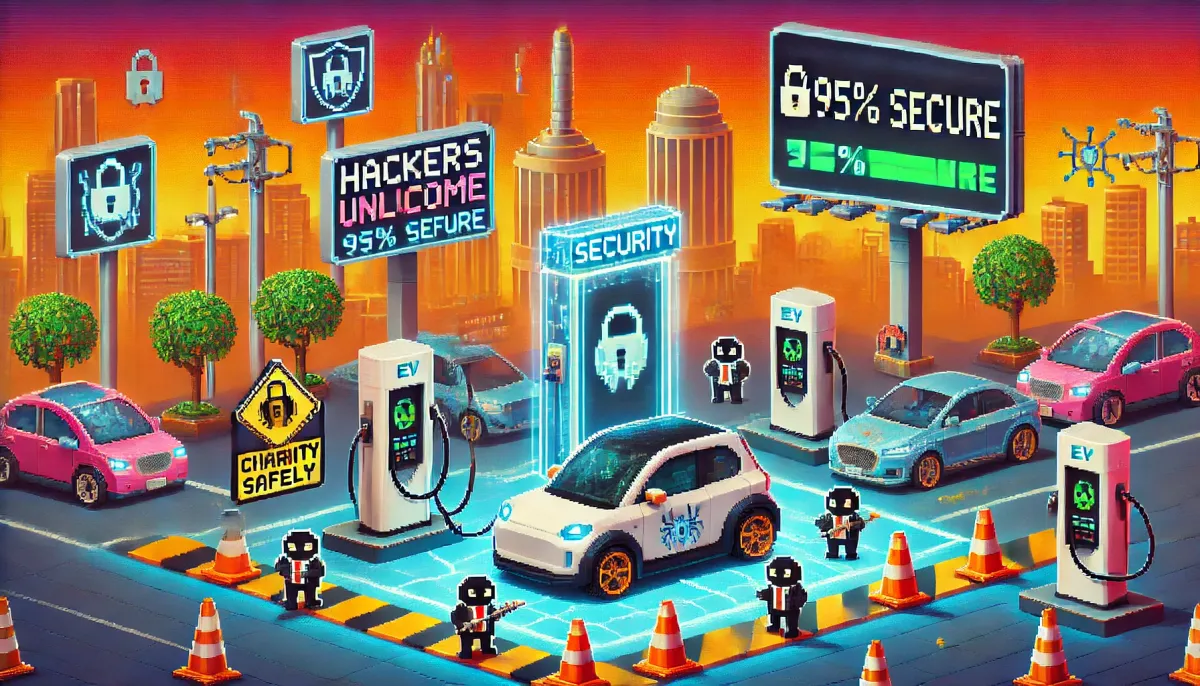Securing the Future of EV Charging Infrastructure: Mitigating Cyber Threats
As the adoption of electric vehicles (EVs) and connected car technologies accelerates, the cybersecurity of EV charging infrastructure and connected car networks has become a critical concern.

TL;DR
-
Man-in-the-Middle (MitM) Attacks: Cybercriminals intercept communication between EV chargers and networks, leading to data theft and unauthorized control.
- Source: Automotive Fleet
-
Malware and Ransomware: Malicious software disrupts operations, encrypts data for ransom, or exfiltrates information.
- Source: Forbes
-
Device Disabling or Overcharging: Attackers disable chargers or cause overcharging, posing safety risks.
- Source: Automotive Fleet
-
Administrative Control Breaches: Hackers gain access to administrative controls, leading to unauthorized changes and operational hazards.
- Source: Automotive Fleet
-
Data Theft and Unauthorized Access: Vulnerable stations allow attackers to steal information or access networks.
- Source: Automotive Fleet
Research Summary
As the adoption of electric vehicles (EVs) and connected car technologies accelerates, the cybersecurity of EV charging infrastructure and connected car networks has become a critical concern. These systems are integral to modern transportation, and their security is paramount to prevent disruptions, data breaches, and safety risks. This report delves into the various cybersecurity threats targeting EV charging infrastructure, their potential impacts, and the strategies to mitigate these risks.
Man-in-the-Middle (MitM) Attacks
MitM attacks pose a significant threat to EV charging infrastructure. Cybercriminals intercept communications between the EV charger and the network, potentially gaining unauthorized access to sensitive data such as payment information, user credentials, and operational data. This can lead to data theft and unauthorized control over the charging process. Implementing strong encryption and authentication mechanisms is crucial to mitigate these risks.
Malware and Ransomware
Malicious software, including ransomware, can disrupt EV charging operations, encrypt data for ransom, or exfiltrate sensitive information. Notable incidents like the "BrokenWire Hack" have demonstrated the vulnerability of EV charging stations to such attacks. Regular firmware updates and robust backup and recovery procedures are essential to defend against malware and ransomware threats.
Device Disabling and Overcharging
Cyber attackers can disable EV chargers or manipulate them to overcharge vehicles, potentially damaging batteries or causing fires. Such attacks can disrupt fleet operations and pose significant safety risks. Ensuring that administrative controls are secure and implementing physical security measures can help prevent these types of attacks.
Administrative Control Breaches
Weak or absent security measures, such as inadequate authentication and encryption, can allow hackers to gain access to a charger's administrative controls. This can lead to unauthorized changes in settings, disabling essential functions, and creating operational hazards. Regular security audits and the implementation of strong authentication protocols are necessary to protect administrative controls.
Data Theft and Unauthorized Access
Vulnerable charging stations can be exploited to steal sensitive corporate information or gain unauthorized access to broader networks. This can lead to extensive network attacks. Network segmentation and continuous monitoring of networked devices are effective strategies to mitigate these risks.
Breaches and Case Studies
-
Isle of Wight Charging Stations Hack - September 2023 - Verisk
- Description: Three charging stations were hacked to display inappropriate content, highlighting the need for robust security measures.
- Actionable Takeaways: Implement strong authentication and encryption. Regularly update firmware to patch vulnerabilities.
-
Shell Charging Network Vulnerability - April 2024 - Dark Reading
- Description: A vulnerability in Shell's network could have exposed millions of charging logs, leading to data theft.
- Actionable Takeaways: Conduct regular security audits and vulnerability assessments. Secure and monitor all networked devices.
-
BrokenWire Hack - March 2024 - Forbes
- Description: Ransomware attack targeted EV charging stations, encrypting data and demanding ransom.
- Actionable Takeaways: Implement robust backup and recovery procedures. Educate users on recognizing phishing attempts.
Recommendations, Actions, Suggested Pivots, Forecasts and Next Steps..
(Subscribers Only)





![[DEEP RESEARCH] Zero-Days Are a Distraction: 2025’s Biggest Losses Were Stolen Tokens + OAuth](/content/images/size/w600/2025/12/zz-3.png)